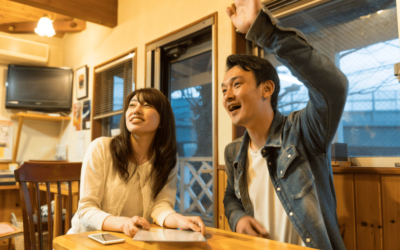A detailed guide covering tips and tricks for learning Spanish using Rosetta Stone
Rosetta Stone is one of the most popular language learning programs in the world, yet a lot people don’t know much about it. As such, potential language learners generally want to learn more about how it works before they make the all-important decision on which platform to use.
In this guide, we’ll cover everything you need to know about learning Spanish with Rosetta Stone, including what kind of time commitment it takes, tips and tricks for success, and ways that you can supplement your journey to master Spanish faster and easier.
How Much Time Per Day Should You Spend Studying Spanish?
Ideally, you will want to spend about 30 minutes each day studying Spanish on Rosetta Stone (or through other avenues for that matter). This is generally the length of three Rosetta Stone exercises, which represents a good balance of material to learn and retain.
Any more studying than this and you might be overloading your brain. Any less, and you may be cheating yourself of valuable opportunity.
Of course, this also depends on how much and how quickly you want to learn.

Some people will spend 15 minutes per day on training, while others might invest three or four hours because they absolutely need to learn a lot in a short period of time. What matters is choosing a timeframe and keeping it consistent.
How Many Hours Does It Take To Learn Spanish with Rosetta Stone?
According to most sources, it takes roughly 600 class hours to obtain full fluency in Spanish. If you only need conversational skills or limited Spanish, you may be able to finish enough of the Rosetta Stone program relatively quickly to hit your goals (perhaps in just 100 hours).
However, if you’re going for true fluency, expect to spend much more time learning.
If you’re going for full fluency and learning for 30 minutes per day, this means it would take you approximately 3.5 years to become fluent. Yikes. 😳
That being said, those are average figures based on findings from linguists for obtaining a C1-C2 level of fluency in Spanish. So it’s a pretty high standard. And the Rosetta Stone program doesn’t include 600 hours worth of content.
How Long Does It Take To Complete Rosetta Stone Spanish?
The Rosetta Stone Spanish program is built around 20 learning units, with each being made up of four lessons. That means roughly 80 lessons total in the program.
However, no two lessons are the same length. Some can be completed in 40 minutes, while others might take close to two hours all in. It really just depends.
Plus, you have to factor in all of the extra resources and tools that Rosetta Stone offers, including stories, phrasebooks, on demand videos, audio companion lessons, and more.
While there is no firm total of content hours stated anywhere on the Rosetta Stone website, I would guess it’s in the range of 300 hours (roughly half of that 600 hour figure).
Therefore, if you’re doing 30 minutes per day, five days a week, it will take you right around two years to finish the entire program. That’s a good chunk of time.
If you do more, you can get it done faster. If you need more time, you can also space it out as desired. Regardless of your speed though, it is important to note that language learning is a process, and it does take time.

From personal experience, I would say that if you just focus on the main lesson work and can study five hours per week, you can finish the entire Rosetta Stone Spanish program in roughly a year and have a B1-B2 level of fluency. That said, this can also be impacted by the supplemental learning that you do outside of Rosetta Stone.
Note: it may be faster to learn with Rocket Spanish since their program is more in-depth and comprehensive than Rosetta Stone’s.
Tips & Tricks For Learning Spanish Using Rosetta Stone
Like anything, you can be more successful with Rosetta Stone if you keep a few tips and best practices in mind.
Practice, Practice, Practice: Language learning is something that just takes practice. Some may be more capable of picking up a new language than others, but at the end of the day, the more you practice, the more you will retain.
Repetition Helps: When you are trying to master pronunciation, it helps to repeat words five to ten times out loud. That gives your mouth the chance to develop muscle memory so that it can say the words properly in the future.

Take Notes: Notes are essential. You can write down things you want to look into further, words you don’t know or struggle with, and other information that you find useful or valuable. Notes will help you in so many ways.
Use Supplemental Learning Tools: In addition to notes, you can find a host of supplemental tools and resources to add to your Rosetta Stone Spanish learning journey. There are plenty of translators, pronunciation tools, and other Spanish apps designed to complement your program and speed up the process.
👉 Read Our Full Review of Rosetta Stone Spanish Here
How To Supplement Your Spanish Language Learning Journey
The more you can engage in Spanish conversation and culture, the quicker you’ll pick up the language, and the easier it will be. Rosetta Stone is a great program for language learning, but it’s not the only thing that should be on your list. You can supplement your Spanish learning by:
- Watching TV and movies in Spanish, especially cartoons
- Watching streaming content and social videos online
- Turning on closed captions in Spanish
- Listening to Spanish music
- Using translator and pronunciation apps
- Utilizing online tools and training for additional support
There are TONS of videos online designed to help you get immersed in Spanish, which will greatly speed up the learning process. Nonetheless, however you choose to learn Spanish, just remember that consistency is key.
How long it takes to “learn” Spanish with Rosetta Stone really depends on your end goals in terms of level of fluency. If you just want some basic conversational skills, you could achieve that in just a few short months with Rosetta Stone. However, if you want to become truly fluent, expect the process to take closer to 18 months, including some live lesson work.
If you focus on the main lesson work and can study five hours per week, you can finish the entire Rosetta Stone Spanish program in roughly a year with a B1-B2 level of fluency.
Of all the Spanish apps I’ve used and reviewed, Rosetta Stone is one of the better programs. I particularly like their immersive learning framework and heavy use of imagery (great for visual learners).




